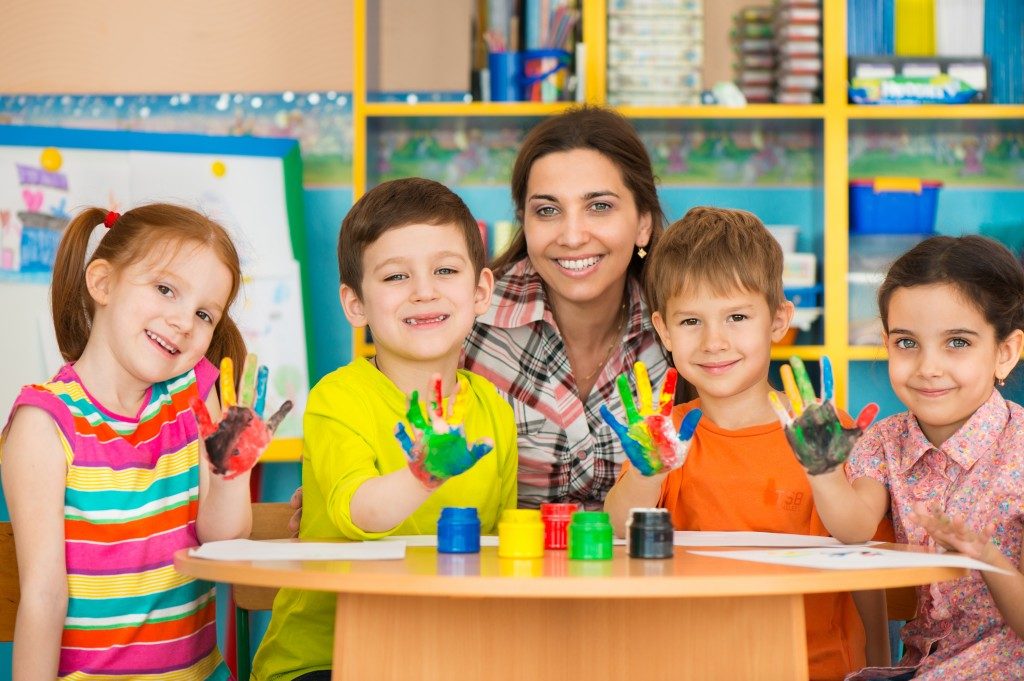If you’ve ever seen a child enthusiastically fingerpaint across a piece of paper to create doodles, or the concentration they put in as they mold their play dough in various shapes and sizes, then you’ve witnessed expressions of art explored.
The majority of us intuitively understand the importance of art for our little ones; we feel it is necessary mainly because we have witnessed our children get intensely immersed in art. Beyond our feelings and knowledge, there is a multitude of scientific data regarding why acquiring skills is vital for our child’s early learning and development.
The significance of art class extends well beyond assisting youngsters in developing their talents in sketching, painting, sculpting, dancing, photography, theater, and other forms of art. Regardless of the possibility of pursuing a career as a professional artist, children exploring their way into the arts are also building life skills essential in preparing them for the future.
Attention to detail
When we begin teaching young people art, they are straightforward and employ basic approaches and techniques. For instance, if you tell them to sketch you a human being, they will begin by making a circle for the head followed by lines and various shapes for the body, hands, and the rest of the details.
Stick figures are an excellent place to start for new painters before moving on to basic forms. As an artist’s work develops, they might be able to delve further into what constitutes the theme of their craft. That is why we need to encourage children to examine their work more closely as early as in the art class.
For example, ask them if the person they draw has blue or green eyes, then using the right shade of color will better represent their features. It’s also possible that their arms are longer than expected. Art can encourage children to examine a person more closely and analyze who they indeed are.
Having empathy
While it is enjoyable and exciting for children to begin a masterpiece, they occasionally get the chance to explore how they will bring that figure to life. Engaging and stimulating more conversation with them might start to realize the breadth of their creative potential. As a parent or an art facilitator, you need to assume the role of challenging young learners to do more than a basic sketch to comprehend what that person actually means.
While some art is entirely about the artist’s perspective, another technique examines a person without putting preconceived beliefs on them and instead adapts the piece to the model’s personality. For instance, if the subject has a highly active personality, it is critical to select appropriate elements and execution techniques.
To depict an individual, they must put themselves in their shoes and understand their viewpoint—this aids in developing their empathy, compassion, and open-mindedness.

Understanding constructive criticism
The acceptance and understanding of why constructive feedback is given on performances or artworks is a frequent and vital component of every art lesson. Learners acquire the importance of it and that it is a crucial part of the learning process which should not be taken personally.
It’s beneficial as the main objective is to enhance and assess their abilities as they build their character and performance in every phase. It sheds light on the parts that they have missed or have never even considered. In the real world, this skill would be helpful, especially in handling their feelings should other people give various feedback on their performance academically, personally, and professionally.
Each artistic profession has built-in boundaries that assure critiquing is a meaningful experience that significantly adds to the overall piece’s success.
Fosters responsibility
When youngsters work together to create something, they become accustomed to the concept that their output, deeds, decisions, and behaviors impact others. They realize that if they’re not fully ready or on schedule, others suffer as a result. Furthermore, art also teaches them to learn through skills that it is critical to recognize when they commit mistakes and accept accountability.
Because making an error is an inevitable facet of the learning curve, children learn to expect and understand them early. Thus, they acknowledge them, take note of what they’ve learned, and move forward.
Making art broadens children’s opportunities to connect with their surroundings and teaches them new abilities for self-expression and connection. Not only can art facilitate the establishment of the right hemisphere of the brain, but it also nurtures vital skills that are beneficial to a child’s growth. Art transcends quantifiable data. It can serve as a critical way of free self-expression and astonishment for a youngster. Skill is vital in the same way that language and breathing are essential. It is a crucial element of what distinguishes us as uniquely human.

